Summary
Circular shear knives are vital in slitting operations, ensuring clean and precise cuts in a variety of materials. However, they face wear challenges that can disrupt production. This guide identifies five common wear issues, their symptoms, and effective repair techniques, backed by actionable maintenance tips to extend blade lifespan.
Introduction
Circular shear knives are indispensable in industries such as metal fabrication, paper production, and plastics manufacturing. These rotary tools slice through materials with remarkable precision, supporting efficient production processes. Yet, even the most durable circular shear knives encounter wear over time due to continuous exposure to friction, pressure, and extreme conditions.
Neglecting wear and damage can lead to production delays, poor quality cuts, and higher operational costs. Fortunately, understanding common wear issues and implementing repair strategies can restore blade performance and extend its service life. Let’s dive deeper into how you can maintain these critical tools for optimal functionality.
Understanding Circular Shear Knives Wear
Every circular shear knife operates in demanding environments where friction, heat, and pressure are constant companions. These factors accelerate wear, ultimately reducing efficiency. Industry studies estimate that up to 40% of slitting issues stem from blade wear, often caused by overlooked maintenance.
Key Contributors to Wear
- Material Hardness: High-strength materials like stainless steel wear down edges faster than softer materials like aluminum or paper.
- Improper Alignment: Misaligned blades exert uneven pressure, leading to localized damage.
- Environmental Conditions: Exposure to moisture or chemicals promotes rust and surface degradation.
- Operator Misuse: Errors such as overloading the blade or neglecting lubrication hasten wear.
Identifying and mitigating these factors ensures your blades perform effectively and last longer.
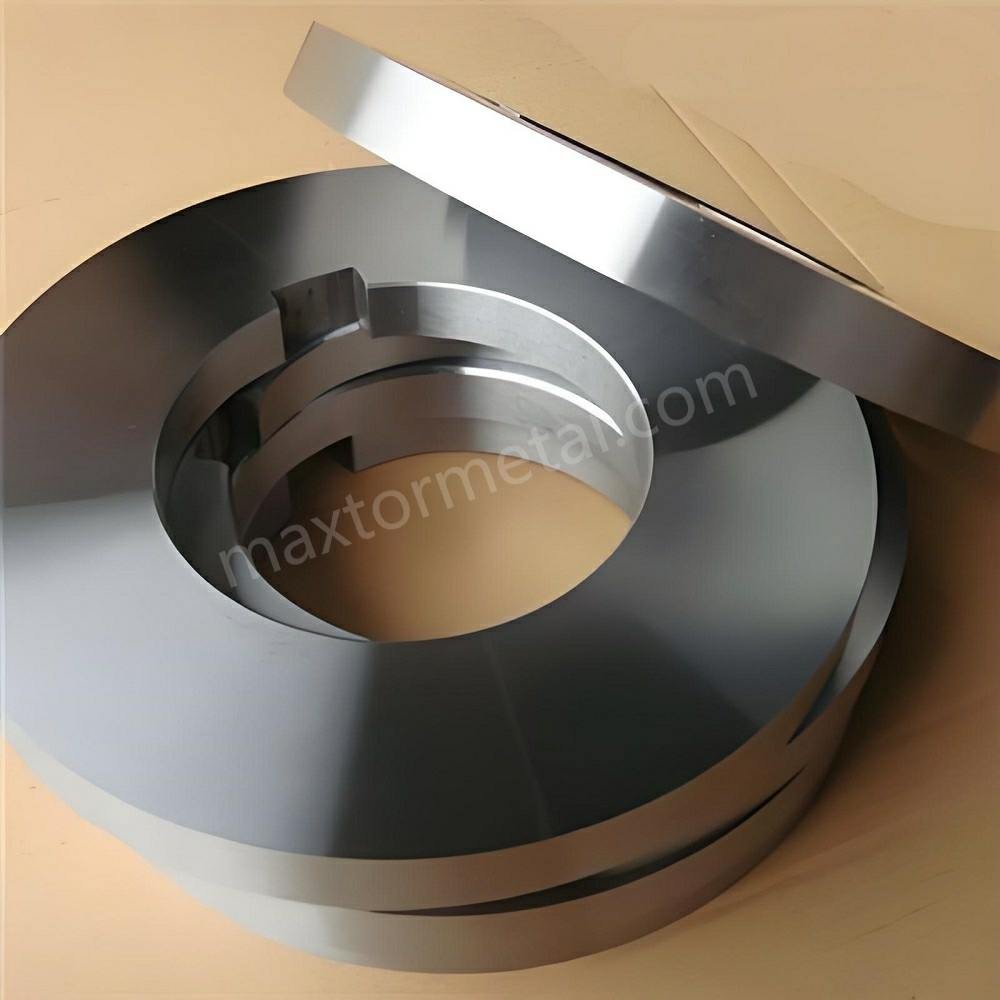
Key Wear Issues and Their Symptoms
Edge Dulling
Edge dulling occurs when continuous cutting erodes the blade’s sharpness. Research indicates that dull edges increase machine energy consumption by 15%-20%, straining both machinery and operators.
Symptoms:
- Rough, uneven cuts.
- Higher power usage and machine vibrations.
Preventive Tip: Perform regular edge inspections and schedule regrinding before dullness impacts production.
Chipping or Cracking
Chips or cracks usually result from excessive force, accidental impacts, or fatigue in high-pressure operations. Damaged blades can fail suddenly, causing costly downtime.
Symptoms:
- Visible nicks or fractures on the edge.
- Sudden loss of cutting accuracy.
Solution: Opt for professional welding or honing services to restore structural integrity. For severe cracks, replacement may be necessary.
Surface Corrosion
Surface corrosion, caused by moisture or chemicals, weakens the blade’s structural integrity. A study by a steel blade manufacturer revealed that corroded blades cut 25% slower than pristine ones.
Symptoms:
- Rust or discoloration on the blade surface.
- Rough texture, reducing cutting efficiency.
Preventive Tip: Store blades in a controlled environment and apply anti-rust coatings to combat corrosion.
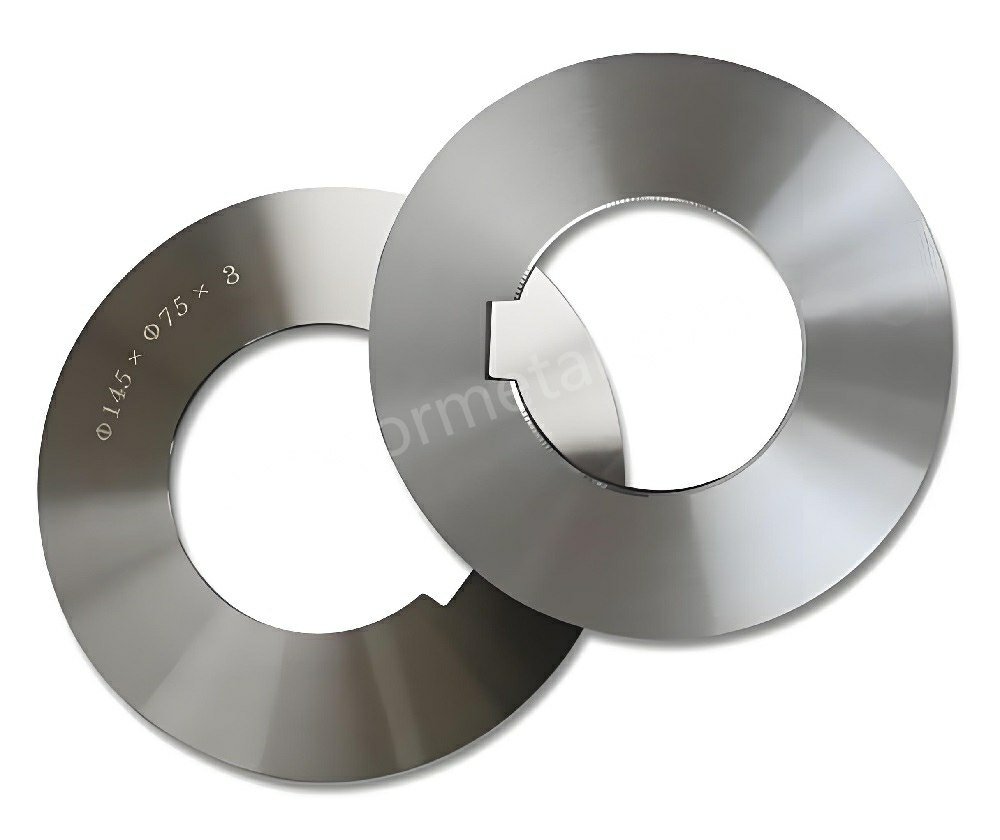
Uneven Wear Patterns
Uneven wear is a common issue in improperly aligned machines. Misalignment causes inconsistent pressure distribution, which not only damages blades but also leads to poor-quality cuts.
Symptoms:
- Visible asymmetry in blade wear.
- Materials slipping or jamming during cutting.
Solution: Adjust alignment settings regularly and use precision tools to ensure even pressure.
Heat Damage
Overheating during high-speed cutting can cause temper loss or warping, especially in poorly lubricated systems. A warped blade disrupts cutting precision and increases downtime.
Symptoms:
- Bluish discoloration on the blade surface.
- Warping or deformation of the blade edge.
Preventive Tip: Incorporate a high-performance cooling system and use lubricants designed for heavy-duty slitting operations.
Effective Repair Methods for Circular Shear Knives
Edge Regrinding
Edge regrinding restores sharpness by removing worn material. Industry experts suggest regrinding after 50-100 hours of cutting, depending on material hardness.
Benefit: Extends blade life while maintaining cutting precision.
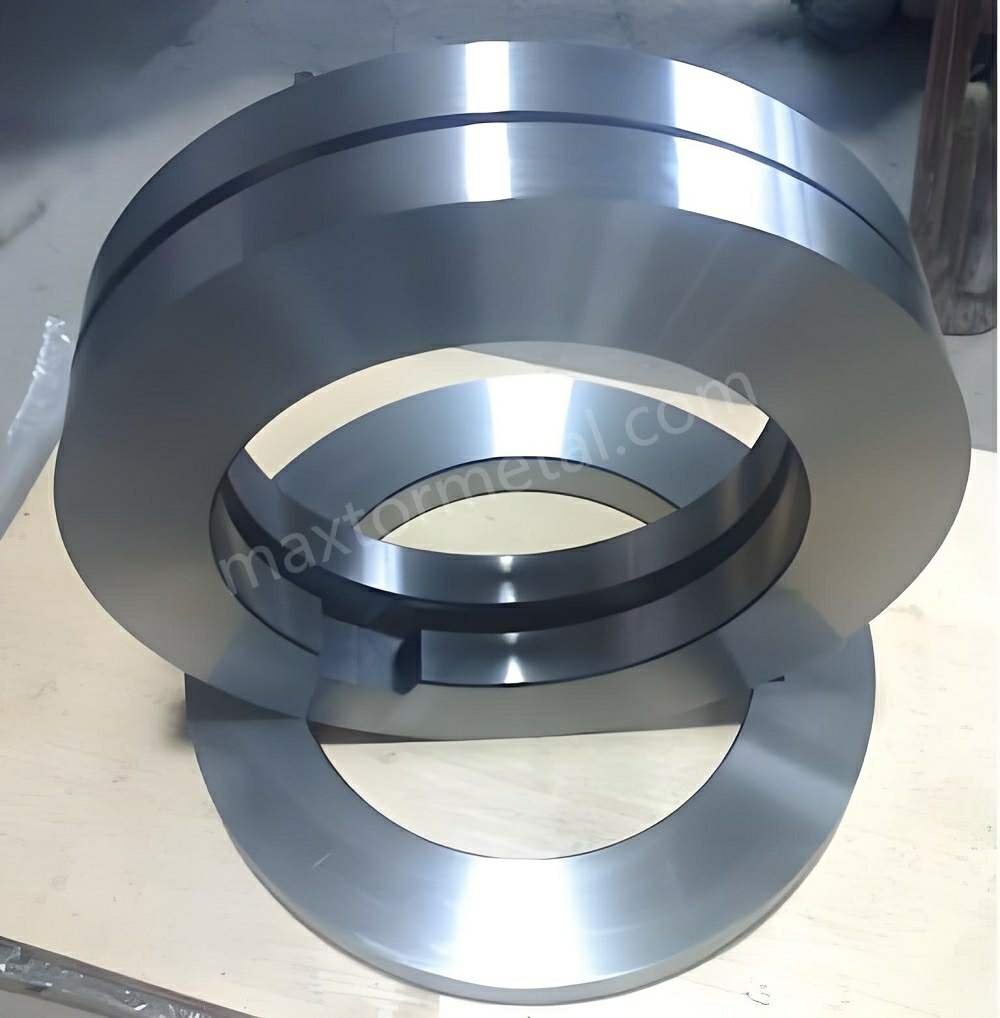
Crack and Chip Repairs
Professional repair techniques, such as laser welding and honing, address chips and cracks effectively. Welded areas are polished to ensure smooth performance.
When to Use: Minor cracks or chips can be repaired; severe damage may require blade replacement.
Surface Recoating
Protective coatings, such as titanium or ceramic, provide a hardened surface resistant to corrosion and wear. Studies show coated blades last up to 30% longer in harsh environments.
Benefit: Improved blade durability and reduced maintenance frequency.
Balancing and Alignment
Balancing prevents uneven operation that could harm both the blade and the machine. Precision alignment enhances performance and reduces wear.
Pro Tip: Always recalibrate the machine after replacing or repairing a blade.
Best Practices for Maintenance and Longevity
Regular Inspections
Frequent inspections allow operators to identify issues before they escalate. Visual checks for dullness, corrosion, or cracks can prevent costly downtime.
Inspection Tip: Schedule weekly checks for wear and monthly assessments for alignment.
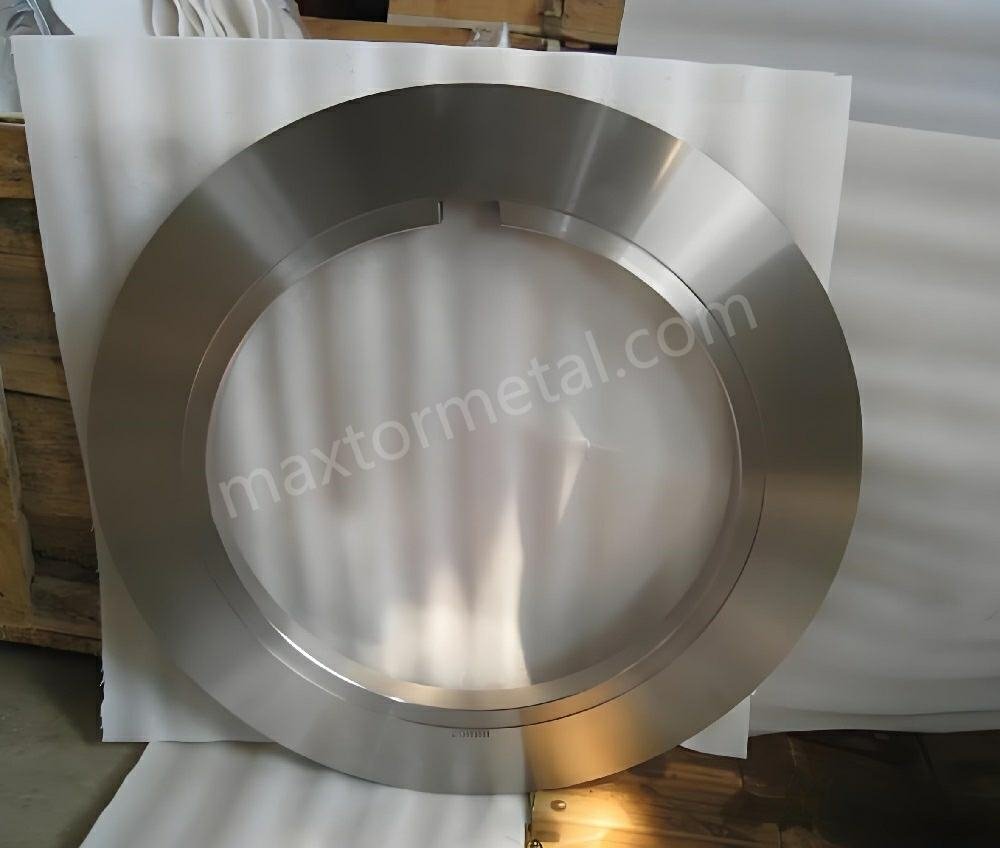
Proper Storage Conditions
Store circular shear knives in dry, controlled environments to minimize corrosion risks. Use padded cases or racks to prevent physical damage.
Tip: Apply a light coating of machine oil before storage to protect the blade’s surface.
Operator Training
Operator errors account for a significant portion of blade damage. Training operators on proper usage, maintenance, and troubleshooting reduces risks.
Training Focus: Teach proper alignment techniques and the importance of lubrication during cutting.
Optimal Lubrication
Lubrication is critical for reducing friction and heat. A report from a lubricant supplier indicated that machines using premium lubricants experienced 20% less wear compared to those with standard-grade oils.
Pro Tip: Always clean blades thoroughly before applying lubrication to avoid trapping debris.
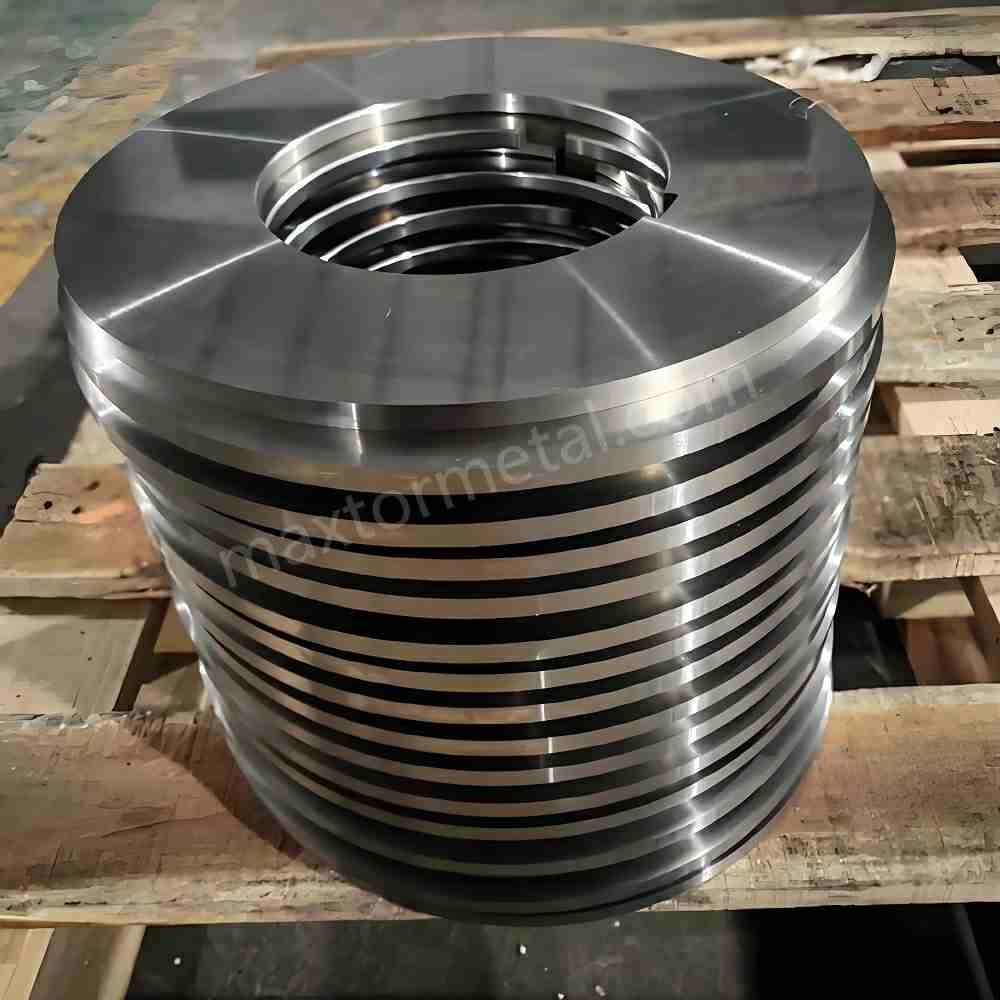
How to Choose a Reliable Circular Shear Knives Repair Service
Certifications and Experience
Choose repair services with relevant industry certifications, like ISO 9001, to ensure quality. Experienced professionals are equipped to handle precision repairs effectively.
Customer Testimonials and Reviews
Reviews provide valuable insights into a service provider’s reliability. Look for feedback highlighting quality repairs and prompt service.
Turnaround Time and Costs
Evaluate repair costs in relation to blade value. Fast turnaround without compromising quality ensures minimal production delays.
Example: A repair service offering 48-hour turnarounds can save companies thousands in downtime costs.
Conclusion
Circular shear knives are crucial for precise and efficient operations. By understanding and addressing wear issues such as edge dulling, corrosion, and uneven wear, you can extend their lifespan and improve productivity. Employing expert repair methods and adhering to maintenance best practices ensures optimal blade performance.
Ready to enhance your cutting operations? Contact us today for professional advice or repair services tailored to your needs.



One Response